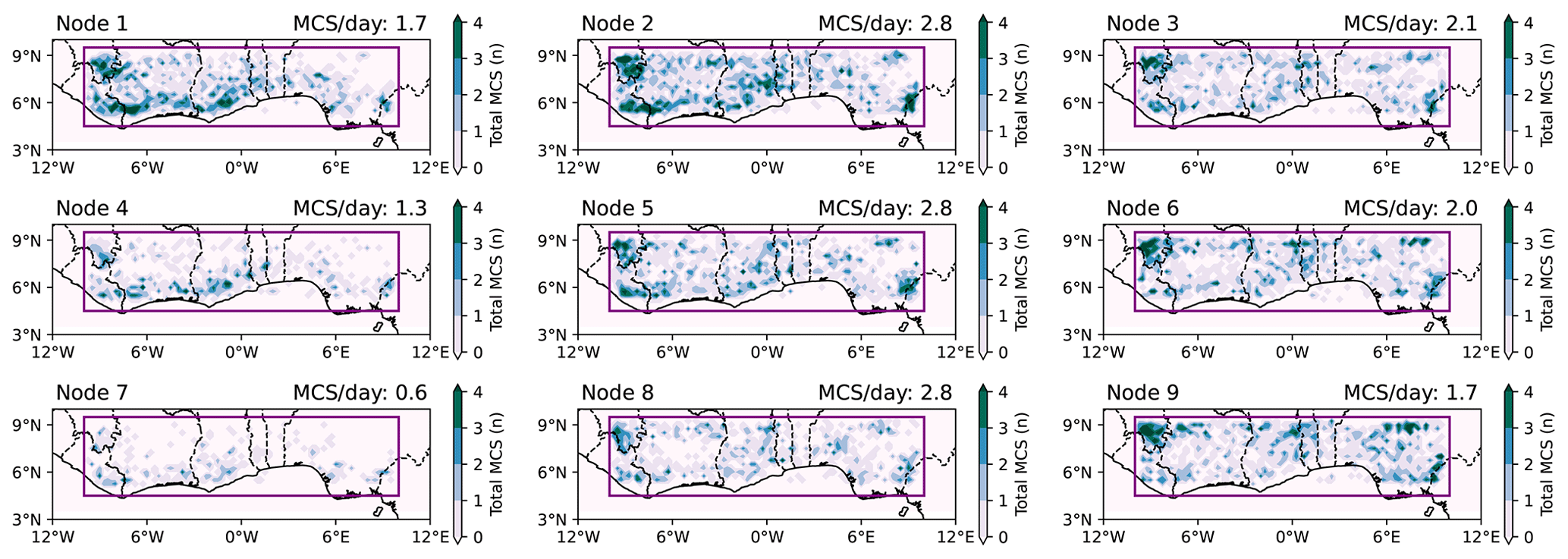Classification of large-scale environments that drive the formation of mesoscale convective systems over southern West Africa
Mesoscale convective systems (MCSs) are frequently observed over southern West Africa (SWA) throughout most of the year. These MCS events are the dominant rain-bearing systems, contributing over 50 % of annual rainfall over SWA. However, it has not yet been identified what variations in typical large-scale environments of the seasonal cycle of the West African monsoon may favour MCS occurrence in this region. Here, nine distinct synoptic states are identified and are further associated with being a synoptic-circulation type of either a dry, transition, or monsoon season using self-organizing maps (SOMs) with inputs from reanalysis data. We identified a pronounced annual cycle of MCS numbers with frequency peaks in April and October that can be associated with the start of rainfall during the major rainy season and the maximum rainfall for the minor rainy season across SWA, respectively. Comparing daily MCS frequencies, MCSs are most likely to develop during transition conditions featuring a northward-displaced moisture anomaly (2.8 MCSs per day), which can be linked to strengthened low-level westerlies. Considering that these transition conditions occur predominantly during the pre- and post-monsoon period, these patterns may in some cases be representative of monsoon onset conditions or a delayed monsoon retreat. On the other hand, under monsoon conditions, we observe weakened low-level south-westerlies during MCS days, which reduce moisture content over the Sahel but introduce more moisture over the coast. Finally, we find a majority of MCS-day synoptic states exhibiting positive zonal wind shear anomalies. Seasons with the strongest zonal wind shear anomalies are associated with the strongest low-level temperature anomalies to the north of SWA, highlighting that a warmer Sahel can promote MCS-favourable conditions in SWA. Overall, the SOM-identified synoptic states converge towards high-moisture and high-shear conditions on MCS days in SWA, where the frequency at which these conditions occur depends on the synoptic state.
